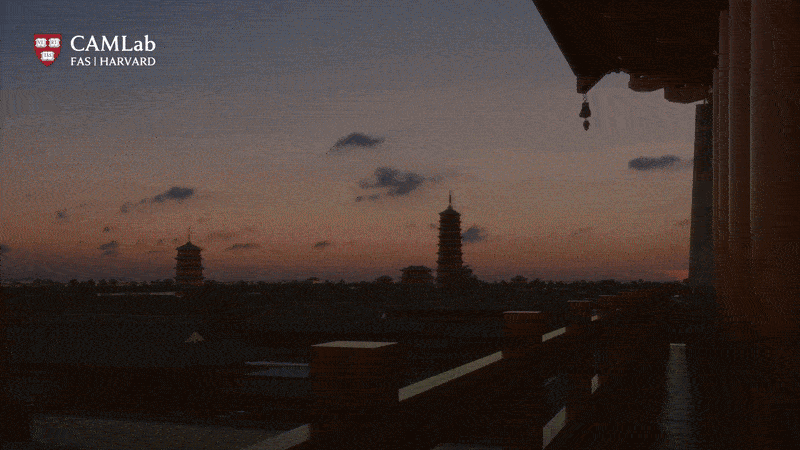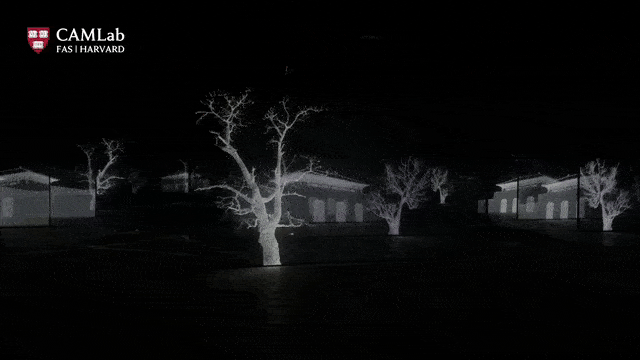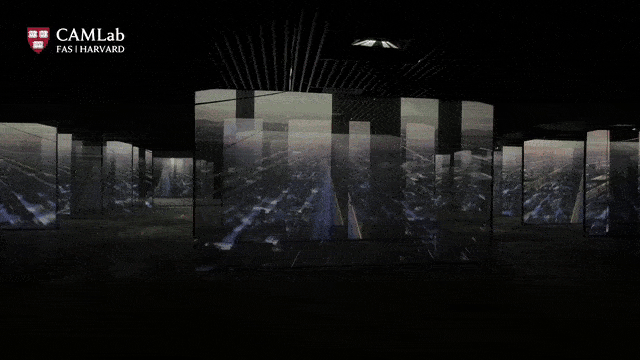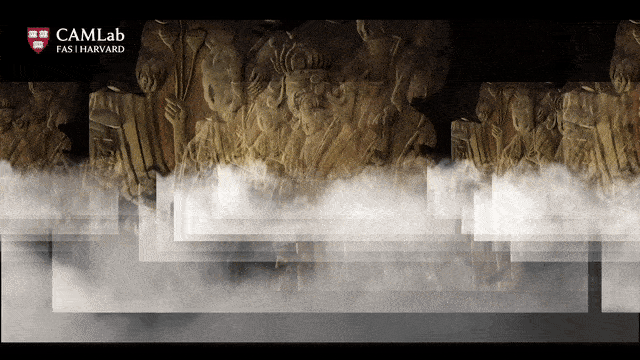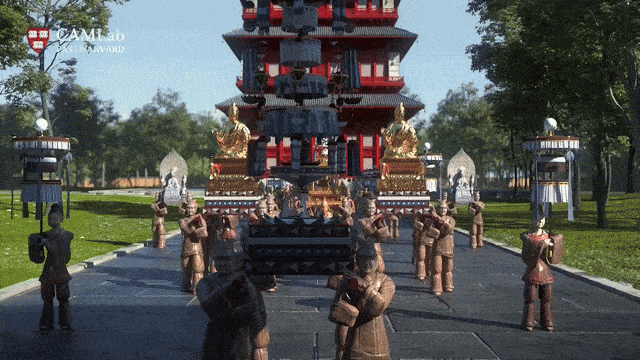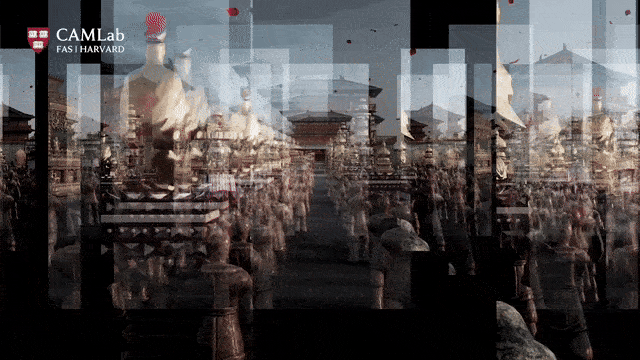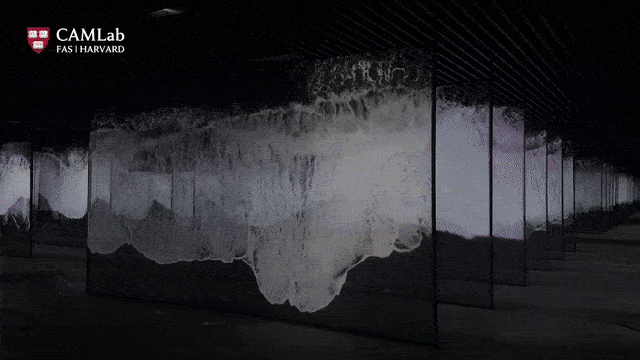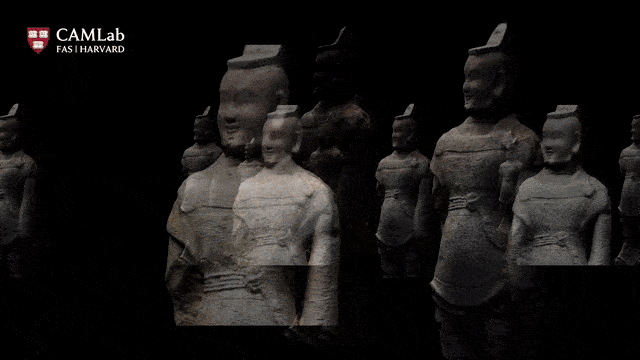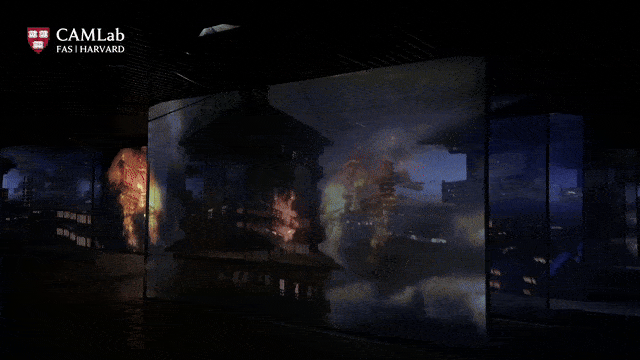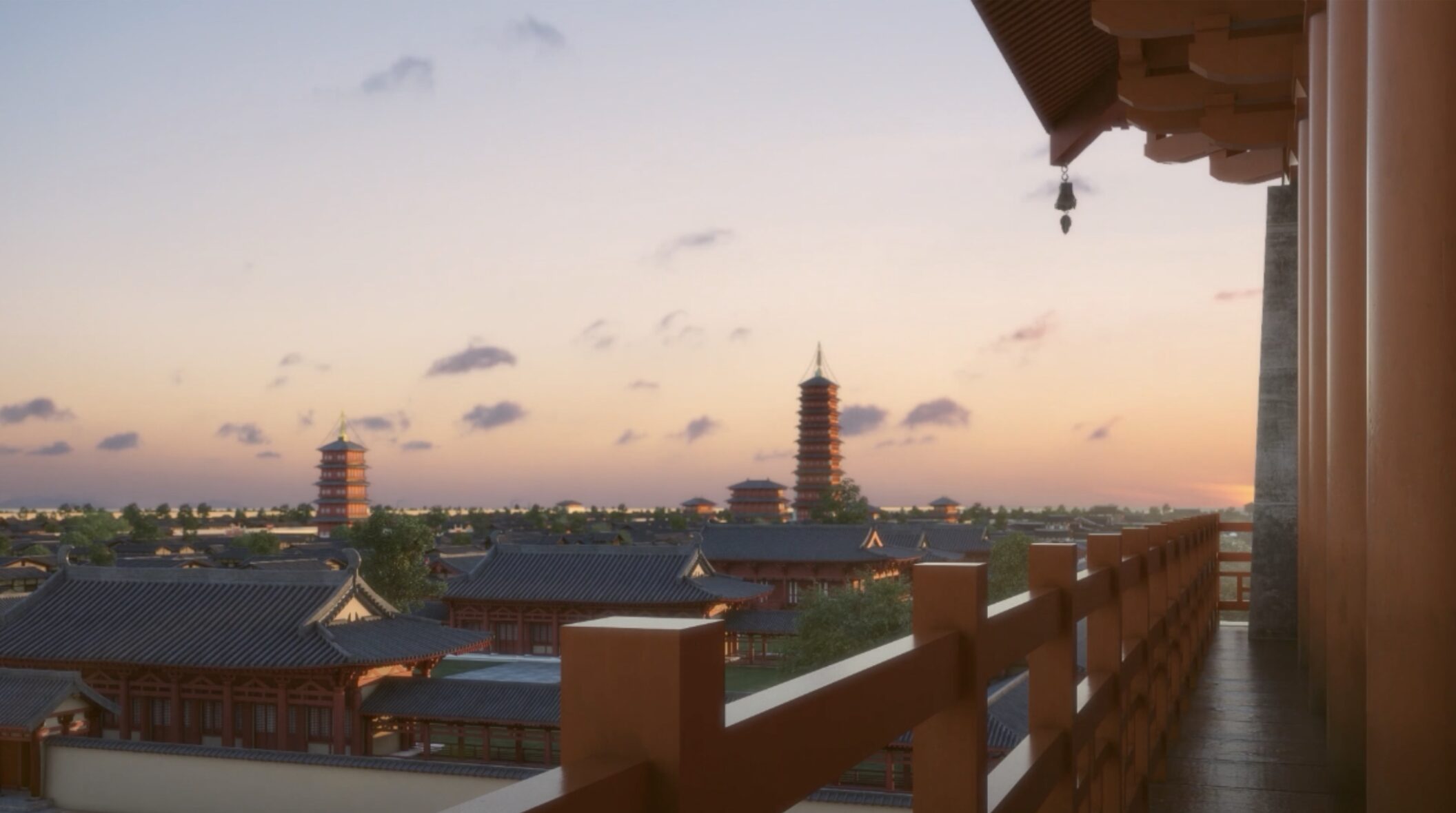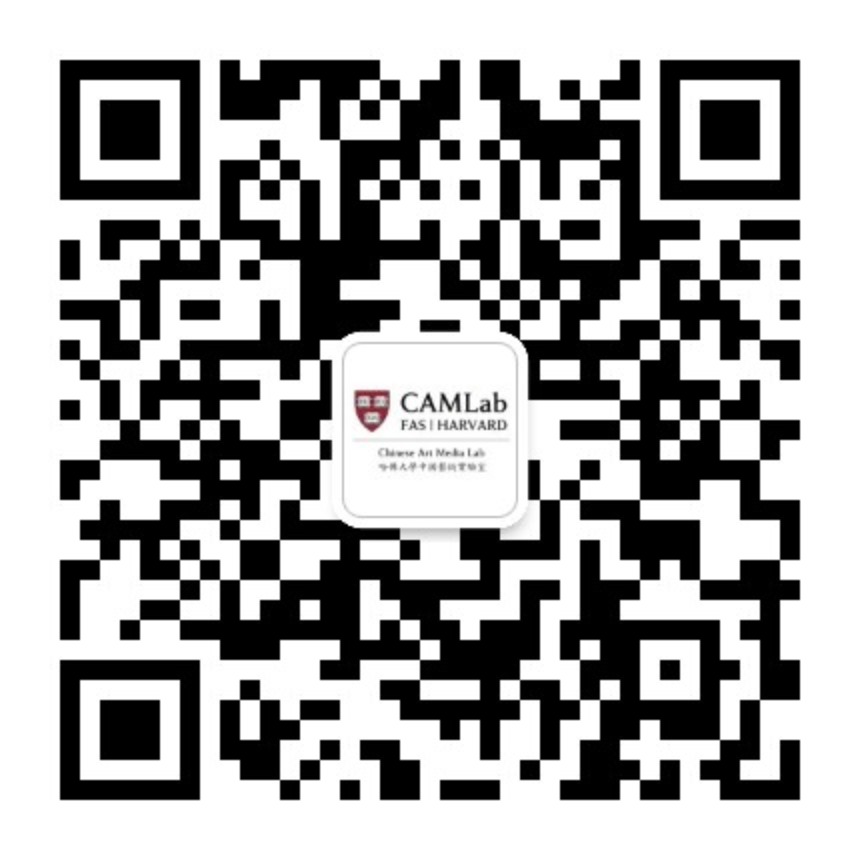Harvard FAS CAMLab’s “Digital Luoyang” (数字洛阳) art installation brings to life the lost grandeur of Luoyang, the capital of China’s Northern Wei Dynasty (386–534 CE), through an experiential heritage theater.

Through in-depth research on archaeological evidence and historical texts and meticulous digital modeling, we have produced detailed 3D models of the city’s urban layout, key districts, and iconic structures, including the Yongning Temple Pagoda (永宁寺塔)—the tallest pagoda in Chinese history—as well as major landmarks such as the Changhe Gate (阊阖门), Xuanyang Gate (宣阳门), Copper Camel Street (铜驼大街), Yong Bridge (永桥), Sacred Terrace (灵台), Jingming Temple (景明寺), and the Qin Taishanggong Temple (秦太上公寺).
The Harvard FAS CAMLab artistic team has transformed these scholarly reconstructions into a mesmerizing multi-screen digital art installation. “Digital Luoyang” invites audiences to explore a layered tapestry of historical fragments and academic reimaginings, unfolding across four thematic chapters: “Earth”, “Wind”, “Water”, and “Fire.”
This installation transforms academic research into an interwoven memory theater. By integrating sound, light, and interactive technologies, we created an immersive artistic experience that transports visitors to the streets and alleys of Northern Wei Luoyang, one of the most magnificent and culturally rich epochs of Chinese civilization.
The Capital Relocation to Luoyang and the Splendor of Buddhist Temples
In the 17th year of the Taihe era (493 CE), Emperor Xiaowen of the Northern Wei Dynasty, Tuoba Hong, relocated the capital from Pingcheng (present-day Datong, Shanxi) to Luoyang in order to implement political, cultural, and economic reforms. This strategic relocation not only exemplified the core idea of the sinicization policy, but also made Luoyang the most important international metropolis in the world at the beginning of the 6th century.
Luoyang became a vital hub for the dissemination of Buddhism in Asia. Emperor Xiaowen and the Northern Wei nobility strongly supported Buddhist affairs and undertook large-scale construction of Buddhist temples.
At the same time, as an important node at the eastern end of the Silk Road, Luoyang attracted merchants, monks, and scholars from Central Asia, India, and East Asia, where various languages, religions, and art forms intermingled and collided.
In the first chapter, “Earth,” the work showcases the grandeur of the Northern Wei Luoyang city with its towering pagodas and majestic palace complex.
The Golden Age of Luoyang and Its Cultural Prosperity
After decades of development, Luoyang became the political and cultural center of the Northern Wei Dynasty. Under the impetus of the sinicization policy, the nobility and people of Luoyang formed a new way of life, with clothing, diet, architecture, and gardens all exhibiting an elegant and graceful fashion.
The wind symbolizes the flow and dissemination of Luoyang’s cultural prosperity of this period. This chapter integrates the artistic heritage and archaeological discoveries of Northern Wei Luoyang, placing sculptures, line carvings, and reliefs alongside reconstructed architecture, and immersing the audience in the delicate and splendid world of Northern Wei art.
The “Wind” chapter focuses on the year 527 (the third year of the Xiaochang era), which marked the zenith of Luoyang’s prosperity. This year, Luoyang celebrated the grand festival—the Buddha’s Birthday celebration.
The Political Upheaval and the Decline of the Northern Wei Dynasty
In the first year of the Wutai era (528 CE), Luoyang plunged into the abyss of political strife. In the late Northern Wei Dynasty, internal contradictions within the court intensified, with powerful ministers vying for power and local separatist forces rising. The northern warlord Erzhu Rong took advantage of the situation to rise to prominence, leading his troops to Luoyang and creating the shocking “Heiyin Incident (河阴之变).”
This event not only put an end to the stability of the Northern Wei central government, but also plunged the people of Luoyang into endless fear and suffering. Water symbolizes the turmoil and ruthlessness of Luoyang’s politics at that time, like a raging flood that swallowed up the once prosperous capital. Luoyang quickly slid from the peak of cultural prosperity into decline.
The “Water” chapter depicts the storm-tossed and cold, rainy nights of the palace complex in Luoyang city, with the elegant figures and splendid art of the Northern Wei gradually dissolving in the flood-like war and massacre.
The Burning of Yongning Temple and Its Historical Echoes
In the third year of the Yongxi era (534 CE), the end of the rule of the last emperor of the Northern Wei Dynasty, Yuan Xiu, in Luoyang was accompanied by a sudden disaster. The nine-story Buddhist pagoda of Yongning Temple, the most magnificent religious building of the Northern Wei Dynasty, was struck by lightning and caught fire, burning for several months until it was completely destroyed. This fire not only symbolized the destruction of Luoyang’s urban construction, but also heralded the end of the Northern Wei Dynasty.
However, fire symbolizes both destruction and rebirth. The decline of Luoyang prompted later generations to rethink the relationship between cities, culture, and history, laying the groundwork for the next chapter in Chinese history.
Established during the Western Zhou Dynasty, Luoyang served as the capital for over 600 years, making it the longest-serving capital in Chinese history. Northern Wei Luoyang was the largest, most well-preserved, and best-maintained capital city in the world at that time.
Since the archaeological surveys began in 1962 by the Luoyang team of the Institute of Archaeology, Chinese Academy of Social Sciences, the overall scale of the ancient city has been largely clarified. The site includes the Southern Suburban Ritual Architecture Site (南郊礼制建筑遗址), Jinyong City Site (金墉城遗址), Yongning Temple Site (永宁寺遗址), and key palace structures such as the Changhe Gate (阊阖门), Taiji Hall (太极殿), and Xianyang Hall (显阳殿). Over 20,000 artifacts have been unearthed, making it one of the richest archaeological sites in China.
The Northern Wei Luoyang was a city of unparalleled scale and preservation, covering an area of 100 square kilometers. This metropolis, which epitomized the glory of its time, tragically became ruins within just four decades of its construction (493-529 CE). Its memory is preserved only in the writings of Yang Xianzhi’s “Record of Buddhist Monasteries in Luoyang (洛阳伽蓝记),” becoming an eternally beautiful yet incomplete image in the annals of Chinese cultural history.
The Han-Wei Luoyang Ancient City Site Museum, with a total construction area of 29,000 square meters, is situated on one of China’s most historically significant sites with a history spanning nearly 1,600 years.
Officially opening to the public for trial operations on June 5, 2025, the museum will systematically display the significant archaeological findings and research results from the Han-Wei Luoyang Ancient City Site over the past 60 years, as well as their precious historical, scientific, and artistic values.



